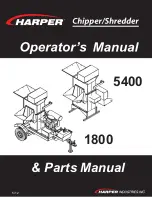
RTAF-SVX001K-EN
19
Installation Mechanical
Location Requirements
Sound Considerations
•
Locate the unit away from sound-sensitive areas.
•
Install the optional elastomeric isolators under the
unit. See
“Isolation and Sound Emission,” p. 21
•
Chilled water piping should not be supported by chiller
frame.
•
Install rubber vibration isolators in all water piping.
•
Use flexible electrical conduit.
•
Seal all wall penetrations.
Note:
Consult an acoustical engineer for critical
applications.
Wind Load Considerations
For units with wind load certification and architectural
louvered panels (model number digits 36 and 37 = DA),
refer to Technical Evaluation Report TER-15-2904F for
necessary storm preparation.
Foundation
Provide rigid, non-warping mounting pads or a concrete
foundation of sufficient strength and mass to support the
applicable operating weight (i.e., including completed
piping, and full operating charges of refrigerant, oil and
water). See
for unit operating weights.
Once in place, the unit must be level within 1/2 in (12.7mm)
across the length and width of the unit. The Trane
Company is not responsible for equipment problems
resulting from an improperly designed or constructed
foundation.
Clearances
Provide enough space around the unit to allow the
installation and maintenance personnel unrestricted
access to all service points. See submittal drawings for the
unit dimensions, to provide sufficient clearance for the
opening of control panel doors and unit service. In all
cases, local codes which require additional clearances will
take precedence over these recommendations.
For close spacing information, see RLC-PRB037*-EN.
Lifting and Moving Instructions
WARNING
Heavy Objects!
Failure to follow instructions below could result in unit
dropping which could result in death or serious injury,
and equipment or property-only damage.
Ensure that all the lifting equipment used is properly
rated for the weight of the unit being lifted. Each of the
cables (chains or slings), hooks, and shackles used to
lift the unit must be capable of supporting the entire
weight of the unit. Lifting cables (chains or slings) may
not be of the same length. Adjust as necessary for even
unit lift.
WARNING
Improper Unit Lift!
Failure to properly lift unit in a LEVEL position could
result in unit dropping and possibly crushing operator/
technician which could result in death or serious injury,
and equipment or property-only damage. Test lift unit
approximately 24 inches (61 cm) to verify proper center
of gravity lift point. To avoid dropping of unit,
reposition lifting point if unit is not level.
WARNING
Proper Lifting Configuration Required!
Failure to follow instructions below could cause the
unit to drop which could result in death, serious injury
or equipment damage.
Use ONLY lifting locations designated with label shown
below. DO NOT use locations marked with do-not-lift
label. See following figures for acceptable lifting
configuration, and refer to labels on the unit.
NOTICE
Equipment Damage!
To prevent damage to unit, do not fork lift or allow
lifting cables to contact unit during lift.
Figure 5.
Labels — lift/do not lift location
Lift Location
DO NOT LIFT
















































